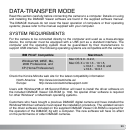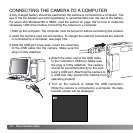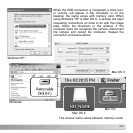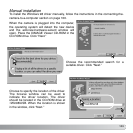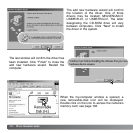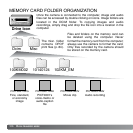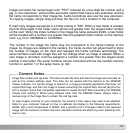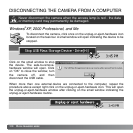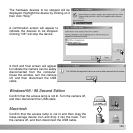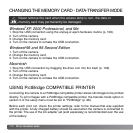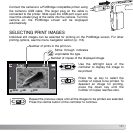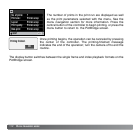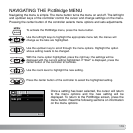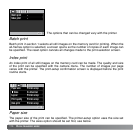
107
Image and audio file names begin with “PICT” followed by a four-digit file number and a
jpg, or mov extension. Voice-memo and audio-caption files have a wav extension and the
file name corresponds to their image file. Audio recordings also use the wav extension.
To copying images, simply drag and drop the file icon into a location in the computer.
E-mail Copy images are placed in a folder ending in “EM.” When a new folder is created,
the first three digits in the folder name will be one greater than the largest folder number
on the card. When the index number in the image file name exceeds 9,999, a new folder
will be created with a number one greater than the greatest folder number on the memory
card: e.g. from 100KM002 to 101KM002.
The number in the image file name may not correspond to the frame number of the
image. As images are deleted in the camera, the frame counter will adjust itself to show
the number of images on the card and reassign the frame numbers accordingly. The
serial numbers used with image files will not change when an image is deleted. When a
new image is recorded, it will be assigned a number one greater than the largest serial
number in the folder. File serial numbers can be controlled with the file-number-memory
function in section 1 of the setup menu (p. 92).
Image files contain exif tag data. This data includes the time and date the image was recorded as
well as the camera settings used. This data can be viewed with the camera or the DiMAGE
Viewer software. If a camera image is opened in a image-processing application that does not
support Exif tags, and then the image is saved overwriting the original data, the exif tag informa-
tion is erased. Some Exif compatible applications rewrite the Exif data preventing the DiMAGE
Viewer from reading it. When using software other than the DiMAGE Viewer, always make a
backup copy of the image files to protect the exif tag data.
To view images correctly on your computer, the monitor’s color space may need to be adjusted.
Refer to your computer manual on how to calibrate the display to the following requirements:
sRGB, with a color temperature of 6500K, and a gamma of 2.2. Changes made to the captured
image with the camera’s contrast and color-saturation controls will affect any color-matching soft-
ware in use.
Camera Notes



